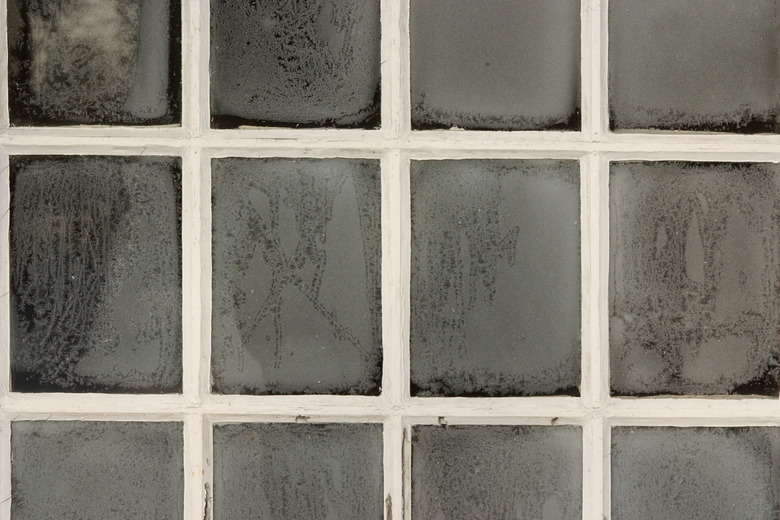Will Plastic Over Windows Stop Condensation?
An unfortunate side effect of having an energy-efficient home, well-sealed against air leaks, is the formation of condensation on the inside of your window glass. Not only does moisture in the air make your living space feel uncomfortable, but it also can lead to the growth of mold. Adding a layer of plastic sheeting over your windows will generally stop winter condensation, but there is more to the equation.
The Basics
The Basics
The air in your home contains moisture from your daily activities such as washing dishes, showering and even breathing. Because your doors and windows remain closed in the winter, ventilation is reduced and moisture builds in the air. You must increase the temperature of your windows' surfaces or decrease the humidity in your home to stop the formation of condensation.
Where Plastic Helps
Where Plastic Helps
When warm, moist air comes into contact with cold window glass, water droplets form on the window's surface. Plastic film stops the formation of condensation on the interior of your window glass by creating a barrier between the air and the glass. If condensation occurs between the inside of your window and your storm window, plastic sheeting or film will help by stopping air from leaking from the interior of your home into the space between the windows. Plastic film also adds a layer of insulation, saving energy.
Where It Doesn't
Where It Doesn't
If you have double- or triple-pane windows with a condensation problem, the North Dakota State University Extension suggests you have an indoor humidity issue. Strive for an indoor humidity level of 40 percent in winter. At such a level, double-paned windows should hold off the appearance of condensation until the outdoor temperature reaches 0 degrees F or lower, and triple-paned windows will delay the formation of condensation until outdoor temperatures drop to -40 degrees F. Increasing the ventilation in your home through the use of dehumidifiers and partially opened windows will help lower the humidity inside. Humidity levels of 30 percent and lower cause trouble with human bodies and wood furnishings.
Other Solutions
Other Solutions
To help counter the problem of condensation, the North Dakota State University Extension suggests adding weatherstripping around your window tracks. Plastic film serves as a temporary solution until you can replace the weatherstripping or better seal your windows. Used in other parts of your home, plastic sheeting keeps moisture from coming up into your crawlspace or working its way into your attic.
Considerations
Considerations
You may see greater condensation problems in areas where more moisture is in the air, such as in your kitchen and bathrooms, and you may see moisture on other surfaces as well as your windows. According to the University of Wisconsin Cooperative Extension, you may also experience condensation problems in the fall as your belongings begin to lose humidity they've gained over summer. Conditions outdoors add to indoor moisture problems. For example, wet winters pair low temperatures with high levels of moisture in the form of rain and melting snow, making reducing indoor moisture levels more difficult.
References
- North Dakota State University Extension Service; Window Condensation a Relatively Common Problem; Carl Pedersen; 2008
- University of Wisconsin Cooperative Extension: Family Living Programs: Windows and Doors
- Cooperative Extension System; Home Window Treatments and Energy Savings; March 2011
- North Dakota State University Extension Service; Keep Your Home Healthy; Kenneth Hellevang, Ph.D.; 2004
